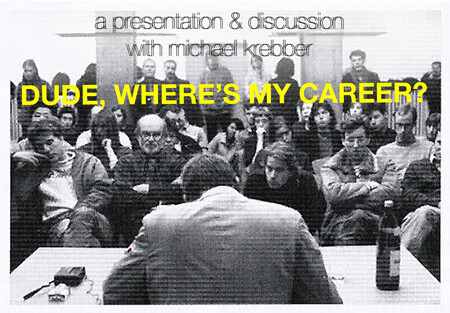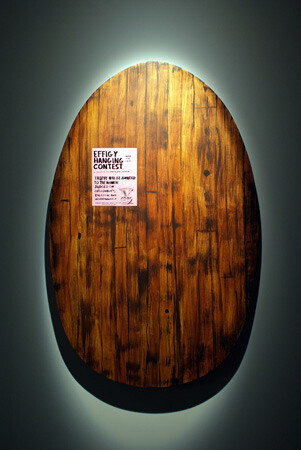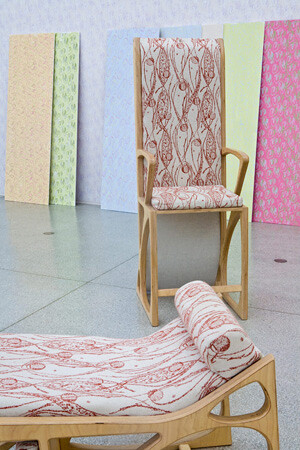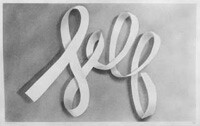When the 2008 Berlin Biennale was being discussed, a mood of friendly disappointment prevailed among critics, which had less to do with individual works and the eternal problems of the Biennale than it did with a perceived absence of struggle and aggression throughout the Biennale in general. Critics found the young artists’ positions too well behaved. In the Tageszeitung, Brigitte Werneburg wrote:
You draw your own conclusions as you leave the exhibition, in this case that it was the work of overachievers. Those model students who always do everything right, who are out to please the teacher or professor and eagerly note down whatever is on the agenda in terms of topics, methods, materials, and theory.1
This wasn’t the first time the older generation—that is, my generation, more or less: the fifty-year-olds, give or take ten years—had accused a younger generation of not being revolutionary, critical, or aggressive enough.2 But those who make accusations like these rarely consider the fact that a truly radical, fundamental critique—if it is to be in step with a new era and do more than simply reiterate the critique formulated by the previous generation—cannot possibly be understood by the older generation. And in addition to that, the older generation is already well acquainted with the repertoire of the previous generation failing to understand a certain new youthful vehemence. According to our own notion of radicalism, the radicalism of the young should fly beneath our cognitive threshold.
Of course, in another sense, this is ridiculous. How could anything that does not concern everyone possibly be radical? And where does the fetish for radicalism in art come from? How is it that an impulse that was originally called radical—a justified impulse to carry the autonomy of art to extremes, to see it as an opportunity for a fundamental critique of, or even attack on, society—degenerate into a mere fetish?
Perhaps we can consider these questions in terms of two different yet related complexes. The first has to do with the changed conditions of what it means to be radical—with the kind of radicalism or critique that is actually attuned to what art is today, institutionally, and with the extent to which that is actually desirable. The second involves the shift in the nature of repression. While repression was previously structured patriarchally, along the lines of the Oedipal complex, it is organized today around the complex of narcissism. In both of these cases, the people affected did not have any choice. But how is one to interact with the social parameters of one’s own psychology—identify with, ignore, or thematize them? Is radicalism actually nothing but a nostalgic and anachronistic gesture from Oedipal times?
Of course, it is problematic to explain artistic practice exclusively, and hence deterministically, by referencing its social and psychological conditions. But the commonplace complaint that young people no longer want to kill their fathers coincides in an interesting way with another phenomenon: the rediscovery and appropriation of forgotten radical artists of the last fifty or sixty years. There is hardly a single contemporary position that does not define itself through the discovery of some earlier position. The assertion and self-assertion demanded of young artists is very often connected with the discovery and reclamation of an earlier artistic position.


This kind of active and often scholarly appropriation of forgotten fathers, often described as “artist’s artists,” began in the early to mid-1990s—with artists such as Mike Kelley, Michael Krebber, and Cosima von Bonin—when there was still a lot to correct and rewrite in art history. Kelley, who had always dealt extensively with the psychological origins of the artist’s vocation, proceeded from the premise that the radical positions he unearthed had been systematically excluded by American art history. In his view, the New York-based journal October and its Europhilic yet centralistic clique of art historians and theorists standing in the tradition of high modernist orientations, consistently ignored American radicalisms that emerged from concrete local conditions outside of New York City. It is a telling fact that October editors and writers were interested in, and organized historical exhibitions with and about the situationists, yet it never occurred to any of them to mount an exhibition on the Black Panthers or John Sinclair and his movement, which came close to being a US-based radical political equivalent of situationism.3 Thus, Kelley often appeared as an author presenting forgotten radical artists of the 1960s, most of whom receive much acclaim today: Americans like Peter Saul, Robert Williams, and Paul Thek, but also Europeans like Öyvind Fahlström. In his early exhibitions in the mid-1980s, Michael Krebber almost exclusively showed material—posters and other printed matter, such as books lying open and book covers in display cases—connected with other artists, filmmakers, and writers: Marcel Broodthaers, Robert Bresson, and Oswald Wiener, and so forth.4 Cosima von Bonin devoted her works and exhibitions to other artists from the very beginning: well-known artists like Yoko Ono as well as newly discovered or rediscovered artists like Mary Bauermeister, Andre Cadere, and Poul Gernes. It was Von Bonin, for example, who sparked the broad international rediscovery of Gernes.5
For a number of years now, artists have not been the only ones presenting such discoveries. Curators, and especially curators of large-scale exhibitions, also make it a point of honor to rehabilitate forgotten positions, as the last documenta did, for example, with Charlotte Posenenske and others, or the 2006 Berlin Biennale with Francesca Woodman. Today—and this is the indirect impetus for this essay—curators routinely proceed this way not only with forgotten positions, but also with classical radical positions. At the 2009 Venice Biennale, for example, Daniel Birnbaum showed the work of Tony Conrad—who was rediscovered more than a decade ago by Kelley and others, and remains very present these days, for good reason—as well as early Japanese performance art or works by Blinky Palermo and other fallen greats so that the sun of a past artistic radicalism might shine on what was otherwise a less radical program of contemporary art.
I could cite countless other instances, but two points here interest me most. The first has to do with the psychology of contemporary artists and the possible implications for a critical production of an aesthetics of the present. The second involves the appearance of radicalism in relation to radical practice and the notion of radicalism in contemporary discourses in general.
No description of artistic practice in bourgeois society has thus far been able to avoid the aspect of the exceptional status of artistic subjectivity, whether it is described in legal terms as a special freedom, in pragmatic terms as a suspension of the rules by which speech acts are normally governed, or in political terms as autonomy. This privileged position is a double-edged sword from the point of view of artistic production. It permits and gives license, and in doing so cuts off prior determinations, guidelines, and forms of assistance, but also reference points, communicative addresses, and automatic responses that are forthcoming in the case of other, unexceptional communicative processes. And indeed, this exceptional freedom of art and its role in maintaining the social order has often been criticized, always in connection with the allegation that it is constantly bringing forth politically utopian productions that constantly prevent art from having any direct effect. In this sense, the price that art has to pay for its freedom is the other side of the same relationship: a decoupling of art from consequences, social reality, and the suspension of its character as a speech act.
But if one plays the game of art under these conditions, one is faced with another fundamental problem: the unrestricted nature of this freedom has a tendency to impede rather than produce. Causally, this problem is related to a lack of impact, at least within the logic just described, in which the lifting of social taboos is punished or paid for with a loss of social relevance or effect. This logic would suggest that a little bit of adhesion should result in a little bit of impact; and whether it is also true that maximum adhesion would result in the greatest possible impact must remain an open question. (This can be further supported by the fact that artists often join sects and even broad political movements; an alliance with the state also guarantees a certain impact.)
Traditionally, however, this adhesion takes the form of a relationship to an ancestral lineage, a relationship organized patriarchally as identification or dis-identification with a series of masters. The young male artist learns from master X, imitates master X, and breaks with master X, and then at some point finds his way back to master X, since young artist is now master Y. At least in most parts of Europe today, this chain of paternal identifications and patricides is mirrored in the structure of art academies; those who sought to end the practice of master classes in the 1990s generally failed to achieve their goal. This also clearly constitutes the backbone of art history, which is organized in terms of successions, substitutions, and reinstatements. If the clear identifying marks of this game are missing, the field of art history emits cries for help, like the one published not long ago by Florian Illies in Die Zeit, where he suggests artists no longer want to kill their fathers and have been taking their cues from Andy Warhol for far too long.6 The latter point is an interesting one: Why isn’t Andy Warhol a suitable object for patricide? We will return to this later.


The fact that a more narcissistic generation of artists initially seems to have no interest in generational conflict may be seen as a result of social progress, but it may also be viewed as the institutionalization and reification of that progress as a production standard in post-Fordist and neoliberal societies. For narcissistic artists, the foundation of their work is a point of stability produced by a self-relation, and that position is already in place before they begin to tackle the outside world. This is why they are able to avoid the stultifying effect of classic repression, which has always colored the rebellion against that repression. In the long run, there is nothing quite as dull as a young man who wants to kill his father.
The question is whether what young people who no longer want to eliminate their parents do want to do is really that much better, such as when Narcissus is no longer transfixed by his own reflection but instead puts pressure on a perfect image of himself. For this is the normal condition of contemporary competitive socialization within the affective labor of capitalism, in which—as an American television series recently put it so well—one has a choice between “a party disguised as work” or “work disguised as a party.” The widespread narcissism that is so frequently diagnosed, particularly in the creative and bourgeois milieus (but not only there, as the popularity of fitness centers and body art across class boundaries attests), did not arise spontaneously. It is also not a solution to the Oedipal problem that old school repression, discipline, and the threat of punishment have not only been discredited as “poisonous pedagogy” (schwarze Pädagogik) in the educational realm, but have also disappeared from all forward-looking production sectors. Narcissism usually stands for nothing but the relocation of the command center to one’s own upper room. Oedipus received his instructions from the patriarchal order, from fathers, superiors, and authority figures, and the only way to get rid of them was to eliminate them and become a father oneself. Narcissus, however, is his own commanding officer—the much-vaunted ideal of all the new self-employed small business owners who want to be their own masters. And as a psychological structure, this ideal, which mini-entrepreneurs are saddled with today, isn’t easy to escape. In reality or even in one’s imagination, there are no scenarios in which one can simply get rid of oneself as one’s master. It isn’t easy to negotiate with oneself. The old utopia that Louis Althusser recommended to industrial society’s underlings as a form of resistance and liberation—to become a “bad subject,” unfinished, not fully processed, opaque—doesn’t work if you are your own worst enemy and evaluator. Self-evaluation—a familiar ritual in today’s universities and workplaces—is nothing other than a visible, public form of organized narcissism as higher-order repression.
A good way of explaining this paradigm shift may be to compare it with the current debate about sexual abuse. After all, the relationship between the generations is always defined by power and eroticism, both of which come together in the discussion of abuse. Here, I can point to Educational Complex (1995), Mike Kelley’s sweeping project on training and education in the art world, in which the artist filled out the official form used to file charges of sexual abuse in California by describing himself as the abused student of Hans Hofmann. As both painter and teacher, Hofmann had an enormous influence on the Abstract Expressionists and the following generation—the two generations that produced Mike Kelley’s teachers.


Kelley speaks of abuse in this context mainly because he sees the upsurge in people describing themselves as victims to be directly related to contemporary shifts in the politics of the generational. Only now, in the age of normative narcissism, has it become possible to recognize that a certain abuse took place; at the same time, telling one’s story as a victim of abuse has become the prevailing alternative to the patricide narrative. Both narratives deal with the same conflict, but they have different ways of incorporating it into the teller’s subjectivity. The subject, however, bears no responsibility for the intergenerational drama and is therefore not implicated in it as a perpetrator, as Oedipus was. Instead, the subject is implicated as a victim, but also as his or her own victim, as the victim of his or her own weakness—like the eternally overtaxed Narcissus, who can never fully resemble his mirror image. The first point concerns the reality of the previously overlooked abuse, while the second has to do with the fact that, as cultural material, this narrative is also popular among those who have never been abused; they too belong to the same cultural and historical type.
There are two types of child abuse that have recently been uncovered and widely discussed in Germany, and both had previously been disguised as pedagogical measures.7 The first involves cases of classic repression. Such cases have always been recognized as scandalous; priests and teachers who beat their students and the humiliating rituals designed to demean rebellious underlings are well known as the basis of poisonous pedagogy. They are covered up, of course, so they are difficult to expose, but they are covered up precisely because they are easily recognizable as offenses. However, the cases of sexual abuse are a different matter. The actual facts of these cases were often well known. In reaction to the cases revealed at the Odenwaldschule, people who were there or at similar institutions commonly commented that “Oh, everybody knew that was happening.” And it’s clear that there were quite a few people who really did know about many cases of sexual abuse, yet they didn’t express any outrage because they literally couldn’t categorize these incidents. They couldn’t understand them because the abuse was embedded in seemingly liberating rituals of closeness between teachers and pupils. Clearly, the cultural structure of this kind of abuse was not yet familiar, while today it is widely known. This cultural structure is premised on narcissism and the neoliberal world of participatory consumption and constant stimulation in the same way that poisonous pedagogy and the old practitioners of corporal punishment are related to Oedipus and classic, old school repression. At its core, this kind of sexual abuse does not involve preventing one from doing or being something, as repression does, but stimulating and animating against one’s will. Rather than suppress activity, it refuses to allow passivity.
How, then, are we to interpret artists attempting to let themselves be defined by historical role models? Isn’t the choosing or rediscovering of obscure role models a dialectical synthesis of two unsatisfying antitheses—a way out of having to choose between poor alternatives? If I belong neither to my parents (the master who actually shaped and/or trained me) nor exclusively to myself (which would mean falling into the terrorizing loop of narcissism), then it seems like a clever trick to enter a tradition that functions—like parents and like authority—as an external source of instructions and judgments, but one that I have personally selected. I myself choose to be defined in this way, I invent my own tradition, and I use my own criteria to fashion my own brand of nobility—one to which I ultimately wish to be heir.


But now the criterion of radicalism enters the picture. In order to avoid merely replicating my narcissism by looking for someone who suits me, without criteria, I adopt a criterion that is held in high esteem: radicalism. That includes political radicalism, an aesthetic refusal to compromise, biographical undauntedness, and of course the impression of aesthetic and artistic novelty and uniqueness that arises from retrospective history writing. There are three problems with this approach: (1) Radicalism is an empty notion—what’s important is what one does, which in turn determines whether or not it makes sense to do it radically. Otherwise, radicalism is merely an advertising slogan, a hollow intensifier. (2) Radicalism—etymologically speaking, solving a problem by tackling it at its root—is a simplistic concept. Most problems worth solving cannot be split into components as simple as root and cause. The whole thing also smacks uncomfortably of the theoretical model of being and seeming, authentic essence and inauthentic outward appearance. (3) Finally, if the notion of radicalism is to have any meaning at all for artistic quality—as a sudden, unexpected rupture that slices through a dreary routine or as a fearless and rugged aspect that can be mobilized politically against power relations and false consciousness—then it can only be so in connection with a specific historical (and more broadly defined) constellation. But not in connection with past radicalisms, from an Oedipal complex that took place before my time. I fetch an old Oedipal complex, one from an earlier day, into my narcissistic house as a parent-like mascot.
What is the alternative, and do we need one? As I suggested at the beginning of this essay, one might say that the various attempts to react to the psychological systems in which we live and work cannot do much more than merely acknowledge them. We cannot shake them off entirely, at least not if my diagnoses are correct and psychological conditions have something determinative about them—otherwise there would be no need to consider them seriously. Moreover, under the previous condition of Oedipality, despite the fact that artists were at the mercy of such a system, they were actually able to make art that went beyond the conditions they were confronted with.
But one must ask whether it is still necessary to grapple with these conditions today in a way that does not simply reconcile oneself with the unavoidability of one’s own conditioning? The old Oedipal protest, which from today’s perspective is either boring or can only be perceived as aestheticized artistic radicalism, was by no means a matter of course. Before it could harden into an artistic cliché, it had to be developed against repression, forced pretense, and role-play in the old disciplinary society. From today’s perspective, for example, the Oedipal structure of major currents in the history of painting arrives as the mere reproduction of preexisting structures. The only thing that preexisted was the patriarchal system and a capitalist production process based on exploitation through the disciplining of bodies. The Oedipal reaction may have been limited in its action, but it was no automatism. A type of painting that celebrates one’s own action, however phallocentric that action may turn out to be, interrupts—at least initially—the castrating machine of disciplinary society.


Can we therefore conclude, analogously, that the narcissistic reaction or the completion of narcissism—be it the invention of parents or self-indulgence—is also a kind of resistance? No. The production process based on stimulation or mobilization, on voluntary assent and identification, which is becoming more and more important and normative today, is narcissistic in every one of its phases. It may be the case that protesting or opting out are possible as a result of asocial intensifications of narcissism, but something else would have to be possible as well. For although capitalist production has developed into a form that siphons off vitality itself—resulting in an identification with the workplace “me, inc.,” and generating the narcissistic system everywhere—this was not only the result of increasing capitalist exploitation. While it did reach into the intimate and private spheres, into subjective feelings and other hitherto inaccessible realms of value creation, it was, beyond this, also the result of historical processes.
Before a situation could arise in which one has to be stimulated before one is even able to move, the previous disciplinary methods first had to be rendered ineffective. And that has obviously been done. The fact that the act of defending oneself against discipline and repression also opened up a vast terrain for marketing and turned the forced stimulation of sexual abuse into the new paradigm of consumer culture does not refute or invalidate this first insight. It seems to me that what is decisive in this connection is something else: precisely because of its binarism and bipolarity, the binary relationship that I have invoked under various names, including Oedipus/Narcissus, repression / forced stimulation, command/abuse, and Fordism/post-Fordism (others would be disciplinary society / control society, subjugation/governmentality, and social critique / artistic critique) is currently being described, developed, and applied everywhere to interpret a fundamental historical upheaval, while simultaneously being incapable of capturing the specifically historical dimension of that very upheaval. History does not unfold in leaps, from point A to point B; rather, what is historical is precisely the modalities of the transition. Above all, this means that the relevant question is: How are experiences contained in the transition from condition 1 to condition 2, and how do they become effective precisely in that transition? But also, how are experiences silenced and repressed? How can changes be perceived when the terms of the comparison are not evident?
In conclusion, then, I would like to offer two theses. First, there is much that is facile and empty about the gesture of embracing a risk-free, superseded, and ahistorical radicalism, just as it is risky to allow oneself to be defined, but to also fill oneself with the avatar that is thought to be the author of that definition. Nevertheless, there is an equally important but very differently structured element of these gestures that points in a different direction. It raises the question of the historical component—as I have just defined it—in the transition between the above-mentioned points or binary extremes, particularly with regard to how one might experience these transitions. It is a question that should be demanded of this gesture as a criterion for whether or not it deserves to be taken seriously. To what extent are active, primarily younger artists today interested in raising the question of the conditions of this transition and in making historical undercurrents perceptible?
My second concluding thesis is a question. We have seen that, from today’s perspective, the Oedipal model is a historically closed phenomenon, which we even call a myth and hence an ahistorical construct. We see that this model first had to pass through the crucible of protest or patricide, and that in doing so there was an act—one that seemed at the time to be an act of freedom and only appears from the vantage point of false posteriority to have always been in vain. But what is it that Narcissus can or cannot do?
Posing or posturing has a bad reputation; from the vantage point of action, it seems cowardly and inauthentic. But neither does it qualify as pure passivity. In truth, the pose stands for a way of participating in the world that includes both action and passivity, or stands precisely halfway between the two. Craig Owens has compared posing with the middle voice that occurs in ancient Greek: ancient Greek verbs not only have active and passive forms; they also have a third voice that is translated reflexively, between “make” and “be made”—“make oneself.”8 The pose stands for potentiality, active and passive, but it also stands for making oneself available, for an openness to experience. And it stands for a situation in which one takes it as one’s own internal affair to decide how one appears on the outside. In other words, Narcissus socializes himself in the pose; in it, he intervenes in his own way, just as Oedipus does with protest and patricide; in the pose he completes himself; in the pose he may even become radical. Or to put it in yet another way: if we wish to imagine Narcissus taking a step into reality, a political step, the equivalent of an act, that step will have to involve the pose—which, by the way, we have already met as an artistic method in the work of Andy Warhol. And this is why he is not a suitable object for patricide.
Of course, one day we will be able to perceive this entire figure within its limits, as we can with Oedipus today. But that time has not yet arrived; the figure of Narcissus remains incomplete.
Brigitte Werneburg, “Lieber artig als großartig” Tageszeitung, April 5, 2008. See →.
See Juliane Rebentisch, “Im Glashaus,” Texte zur Kunst, no.70 (June 2008), p. 230–33; and “From One Island to Another — Conversation between Juliane Rebentisch and Renée Green,” in Renée Green, Ongoing Becomings — Retrospective 1989-2009 (Lausanne and Zürich: Musée cantonal des Beaux Arts Lausanne / JRP Ringier, 2009, 72–85.
“Radicalism and art are a contradiction of terms to American museum culture (academic Puritan agitprop of the Hans Haacke variety notwithstanding). It will be a cold day in hell when you see a major American museum mount a show of the cultural production of the Weather Underground or Black Panthers. The Situationists are OK; they’re French.” Mike Kelley, “Death and Transfiguration,” in John C. Welchman, ed., Foul Perfection (Cambridge, MA: MIT Press, 2003), 145.
See Michael Krebber—Apothekermann, ed. Karola Grässlin and Susanne Pfleger (Cologne: Verlag der Buchhandlung Walther König, 2000); and Michael Krebber, Außerirdische Zwitterwesen / Alien Hybrid Creatures (Cologne: Verlag der Buchhandlung Walther König, 2008).
See Yilmaz Dziewior, Cosima von Bonin—Bruder Poul sticht in See (Cologne: Du Mont, 2002).
Florian Illies, “Aufruf zum Vatermord,” Die Zeit, January 31, 2010. See →.
In Germany in 2010 and 2011, a series of cases of systematic and epidemic child abuse were discussed with a great deal of publicity. They were alleged to have occurred since World War II in two very different places: repressive educational institutions, especially those of the Catholic Church but of other churches as well, and elite liberal boarding schools like the Odenwaldschule, which subscribed to liberal, progressive educational ideals.
Craig Owens, “Posing,” in Beyond Recognition: Representation, Power, and Culture (Berkeley: University of California Press, 1992), 201–217.
Category
Subject
Translated from the German by James Gussen.
An earlier version of these themes has been discussed in a lecture at the Academy of Fine Arts in Dresden, at the invitation of Su-Ran Sichling and Peter Bömmels.